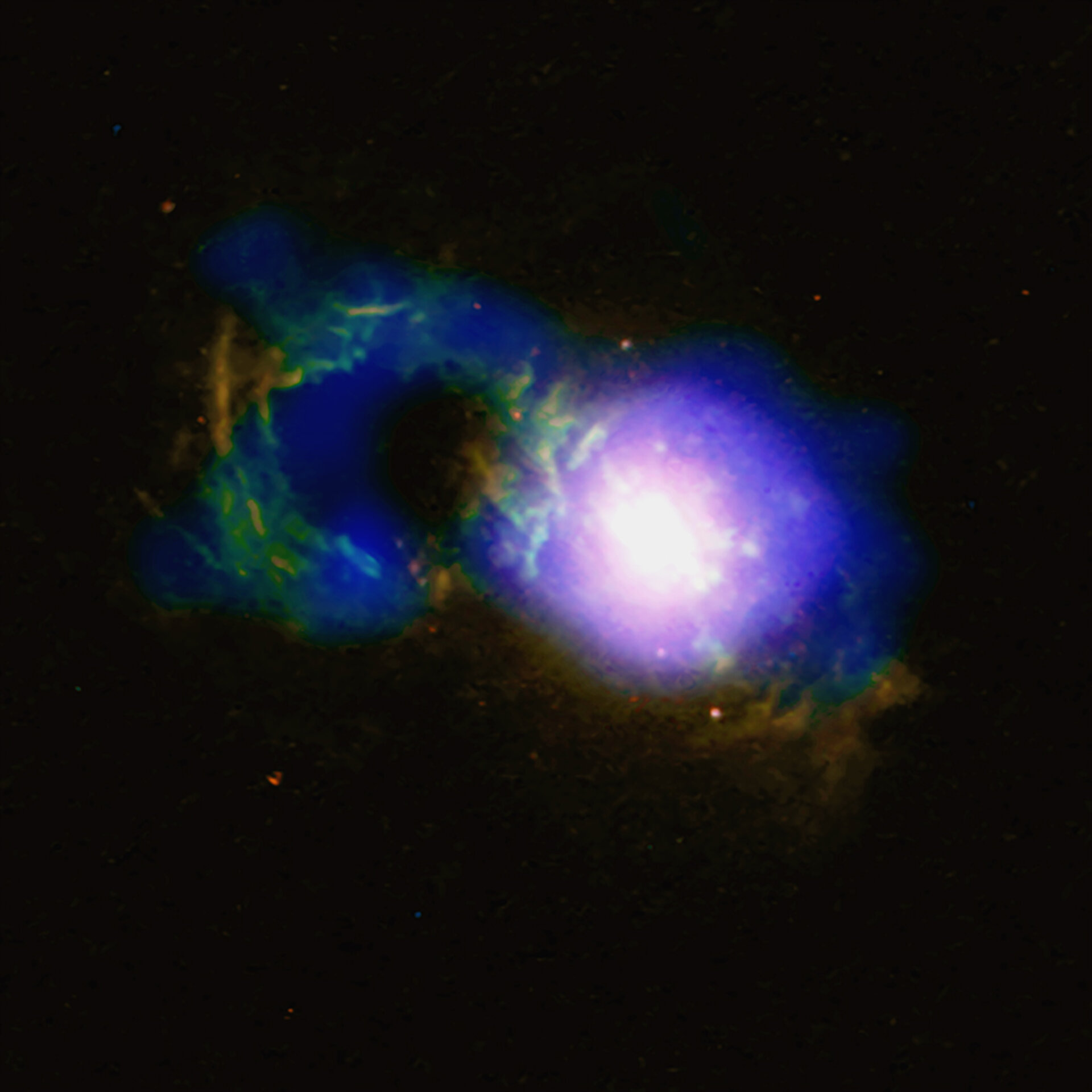Daily Image
15-10-2020Colloquium: Quasar Feedback Survey : The prevalence of radio AGN and the impact on the host galaxies
| Submitter: | Christopher Harrison (New Castle University) |
| Description: | Abstract: Galaxy formation simulations invoke that growing supermassive black holes (i.e., active galactic nuclei; AGN) influence the formation of their host galaxies. This is a consequence of the huge amounts of energy released by the AGN coupling to the gas in, or around the galaxies. This so-called ``AGN feedback'' can have many effects; including, regulating star formation, changing galaxy sizes and the re-distribution of metals. Whilst this is a key component of galaxy formation theory, cosmological simulations make a variety of conflicting assumptions of how this feedback works. Furthermore, the observational results are often conflicting or inconclusive. I will introduce our new "Quasar Feedback Survey" which is a multi-wavelength campaign of the host galaxies of z<0.2 galaxies which host the most rapidly growing black holes, i.e., quasars. This allows us to study the most powerful systems with roughly kiloparsec (or better) spatial resolution, something that is not possible for high redshift galaxies (but where quasars are more common). I will focus on presenting our VLA and eMERLIN observations that reveal that significant radio emission associated with the AGN is common in these systems, despite the majority being classical "radio quiet" systems. Furthermore, by combining our radio imaging with spatially-resolved gas kinematic measurements we see that jet interactions with the interstellar medium are common - perhaps in contradiction with the classical idea that radiative driving is most important for quasars. Finally, I will look at the host galaxy star formation rates and molecular gas content in search of evidence the jets/outflows observed have had an impact upon the host galaxies and then ask how this compares to predictions from the cosmological models. |
| Copyright: | Christopher Harrison (New Castle University) |
| Tweet |  |
